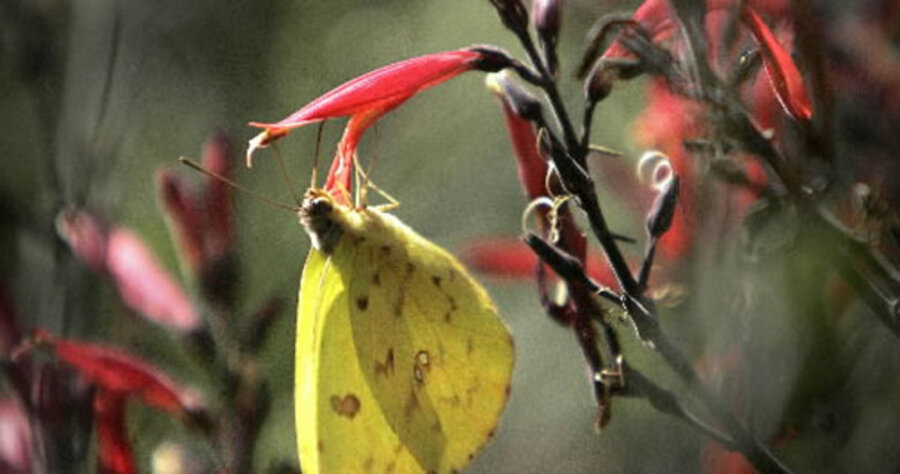Lobelia: a treat for man and beast
Loading...
Glasgow, Scotland – At one point in my childhood I toyed with the notion of making a red, white and blue garden. I don’t think this was due to an excess of British patriotism – after all, the Union Jack is not the only flag in the world that sports that combination of colors. Perhaps it was more a matter of enjoying the colors for their own sake and wanting to force the horticultural world to come along for the ride.
I liked the idea of ordering colors about a bit, as if they were toy soldiers. I decided which plants I would use. For red, I would use salvia. For white, alyssum. And for blue it would be lobelia.
So lobelia has paraded around in my imagination for some time now. And of the original triumvirate (I grew these plants here and there but I never went so far as to make my imagined garden), it is lobelia that I still grow fondly. Or at least I try to.
I should explain that in Britain the most seen lobelia is the small blue kind that sports a multitude of tiny flowers and acts as a kind of visual backing group in window boxes and hanging baskets. It obligingly flowers all summer and well into autumn. It can be upright, or it can be pendulous, cascading over the edge of the container like a fountain.
So popular is it that the hybridizers have come up these days with a whole host a variations. Violet pink, white, pale blue, blue with a white eye – but to me, just plain original blue is fine. In the United States, another kind of lobelia is a common wild plant, Lobelia cardinalis. I have never forgotten a colony of it on the riverbank at Concord, Mass. To me it was brilliant and exotic; to the author of “Walden,” probably a weed. You can try to grow it in Britain, but it is a choice horticultural plant and a delicacy for slugs who like to gorge on the bottoms of its stems.
So at first I thought it must be slugs that fed on our blue window-box lobelia. The next morning after planting them, they would be chomped down to the soil, in a parlous state from which they could hardly recover. And if they did try, they’d be chomped again. Slugs. Or snails. Or maybe magpies, which love bright colors – though not usually to eat. But it took, in fact, a year or two of trying again with lobelia before my wife, looking out the window one day last summer, spotted the culprit at work, nibbling delicately.
I don’t know why, but I hadn’t suspected a mouse. I tend to think of mice as a nuisance when they get into the house. Outside they don’t bother me. But now it turned out that we have an outside mouse with a gourmet taste for blue lobelia. The mouse and I have a philosophical divergence here. To me, lobelia is a visual feast. To the mouse, side salad.
So I dusted down my humane mousetrap, primed it with peanuts, and placed it strategically near a window box. Our mouse fell for it, showing that peanuts make a good main course, and I carried him, or her, in the car to a wild grassy place I know perhaps a quarter of a mile away. Here our mouse was set free, with a few peanuts to keep him going, at the foot of a tall sign advertising a “Development Opportunity With Planning Permission.” I hoped he would read the message and take up permanent residence there.
Just in case he had a friend, I placed the trap for the next night. He had a friend. And soon they were developing opportunities together. After this I put both our friendly traps out each night, just in case the first two had a family, and by the time we reached 15, it seemed that both parties to this arrangement had had enough.
For about two weeks, the lobelia was unmolested, and started to grow again. But then, one morning, we noticed some of it was chomped.
About a decade ago we had a virtual plague of mice in our basement. At that time, I collected 30 of them and relocated them in the wild. This morning, with our lobelia-
lovers, we have matched that record. On some mornings we have two; on some, just one. By now, the relocated mice make up a virtual holiday resort.
Either that, or our two mice are getting a lot of exercise every night as they come back home for their peanut dinner.





